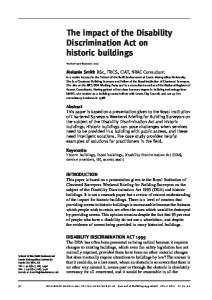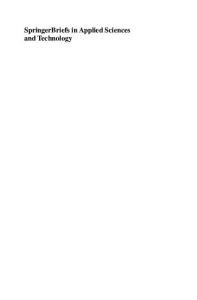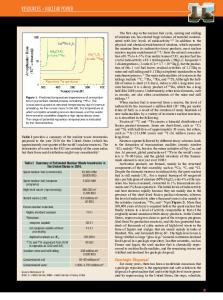Lifetime Environmental Impact of Buildings
This work discusses the impact of the life of buildings on sustainable development methods. The study of the lifespan of the building is used to assess and manage the environmental impacts associated with all the stages of a product's life, from raw mater
- PDF / 3,344,745 Bytes
- 123 Pages / 439.37 x 666.142 pts Page_size
- 44 Downloads / 494 Views
Marc Méquignon Hassan Ait Haddou
Lifetime Environmental Impact of Buildings
SpringerBriefs in Applied Sciences and Technology
Series editor Andreas Öchsner, Southport, Australia
For further volumes: http://www.springer.com/series/8884
Marc Méquignon · Hassan Ait Haddou
Lifetime Environmental Impact of Buildings
13
Marc Méquignon UPS- IUT-LERASS ERPURS Toulouse France
Hassan Ait Haddou Laboratoire Innovation Formes Architectures Milieux Ecole Nationale Supérieure d'Architecture de Montpellier Montpellier France
ISSN 2191-530X ISSN 2191-5318 (electronic) ISBN 978-3-319-06640-0 ISBN 978-3-319-06641-7 (eBook) DOI 10.1007/978-3-319-06641-7 Springer Cham Heidelberg New York Dordrecht London Library of Congress Control Number: 2014938216 © The Author(s) 2014 This work is subject to copyright. All rights are reserved by the Publisher, whether the whole or part of the material is concerned, specifically the rights of translation, reprinting, reuse of illustrations, recitation, broadcasting, reproduction on microfilms or in any other physical way, and transmission or information storage and retrieval, electronic adaptation, computer software, or by similar or dissimilar methodology now known or hereafter developed. Exempted from this legal reservation are brief excerpts in connection with reviews or scholarly analysis or material supplied specifically for the purpose of being entered and executed on a computer system, for exclusive use by the purchaser of the work. Duplication of this publication or parts thereof is permitted only under the provisions of the Copyright Law of the Publisher’s location, in its current version, and permission for use must always be obtained from Springer. Permissions for use may be obtained through RightsLink at the Copyright Clearance Center. Violations are liable to prosecution under the respective Copyright Law. The use of general descriptive names, registered names, trademarks, service marks, etc. in this publication does not imply, even in the absence of a specific statement, that such names are exempt from the relevant protective laws and regulations and therefore free for general use. While the advice and information in this book are believed to be true and accurate at the date of publication, neither the authors nor the editors nor the publisher can accept any legal responsibility for any errors or omissions that may be made. The publisher makes no warranty, express or implied, with respect to the material contained herein. Printed on acid-free paper Springer is part of Springer Science+Business Media (www.springer.com)
Acknowledgments
The first author would like to think Carole, Florian, and Marine Méquignon for their permanent support during the period of developing this book. He would like to thanks the LERASS-laboratory members. The second author would like to sincerely thank his wife Leila and his son Aymen for here energetic and kind support during the book development and editorial process. Special thanks to Springer’s Global Editorial Board, Anthony Doyle, Ash
Data Loading...











